Technology
Boston Dynamics’ new Atlas robot is a swiveling, shape-shifting nightmare
/cdn.vox-cdn.com/uploads/chorus_asset/file/25404945/atlas_yellow.jpg)
Boston Dynamics wanted the new version to show that Atlas can keep a humanoid form without limiting “how a bipedal robot can move.” The new version has been redesigned with swiveling joints that the company claims make it “uniquely capable of tackling dull, dirty, and dangerous tasks.”
“We designed the electric version of Atlas to be stronger, more dexterous, and more agile,” the company said in its press release. “Atlas may resemble a human form factor, but we are equipping the robot to move in the most efficient way possible to complete a task, rather than being constrained by a human range of motion. Atlas will move in ways that exceed human capabilities.”
The teaser showcasing the new robot’s capabilities is as unnerving as it is theatrical. The video starts with Atlas lying in a cadaver-like fashion on the floor before it swiftly folds its legs backward over its body and rises to a standing position in a manner befitting some kind of Cronenberg body-horror flick. Its curved, illuminated head does add some Pixar lamp-like charm, but the way Atlas then spins at the waist and marches toward the camera really feels rather jarring.
The design itself is also a little more humanoid. Similar to bipedal robots like Tesla’s Optimus, the new Atlas now has longer limbs, a straighter back, and a distinct “head” that can swivel around as needed. There are no cables in sight, and its “face” includes a built-in ring light. It is a marked improvement on its predecessor and now features a bunch of Boston Dynamics’ new AI and machine learning tools.
The company also said it’s continuing to build on capabilities already achieved with the last generation hydraulic Atlas model, such as lifting and maneuvering objects, alongside exploring “several new gripper variations” to ready the robot for a range of different industry environments.
Boston Dynamics said the new Atlas will be tested with a small group of customers “over the next few years,” starting with Hyundai. Other humanoid robots from rival providers like Figure and Apptronik are similarly being tested on production lines for BMW and Mercedes, respectively.

Technology
Automatic emergency braking at speeds up to 90mph required under new rule
/cdn.vox-cdn.com/uploads/chorus_asset/file/25426860/2147863367.jpg)
The US Department of Transportation finalized a new Federal Motor Vehicle Safety Standard requiring all vehicle manufacturers to include automatic emergency braking in their light-duty vehicles (basically all passenger vehicles, including SUVs and pickup trucks) by 2029. The new rule aims to prevent hundreds of deaths and tens of thousands of injuries every year. The Department of Transportation is also in the process of finalizing a similar rule for heavy-duty vehicles weighing over 10,000 pounds.
Around 90 percent of light-duty vehicles on the road today come standard with automatic emergency braking, or AEB. But the new rule requires automakers to adopt a more robust version of the technology that can stop vehicles traveling at higher speeds and detect vulnerable road users, like cyclists and pedestrians, even at night.
The new rule requires automakers to adopt a more robust version of the technology
According to the Department of Transportation, all cars are now required to be able to “stop and avoid contact with a vehicle in front of them up to 62 miles per hour and that the systems must detect pedestrians in both daylight and darkness.” Also, AEB systems must apply the brakes automatically “up to 90 mph when a collision with a lead vehicle is imminent, and up to 45 mph when a pedestrian is detected.”
Under the new rule, automakers would be required to beef up their current AEB systems, which research has shown to be decent at preventing low-speed rear-end crashes but less effective when vehicles are traveling at fast but still average speeds. The American Automobile Association (AAA) has been testing AEB systems for years and found a variety of common scenarios in which the braking technology completely fails to do the job as advertised.
The new standard comes amid a modest decline in traffic deaths, which spiked during the pandemic. The National Highway Traffic Safety Administration said that 42,514 people died in crashes in 2023, down 3.6 percent from the year before. It was the third year in a row in which more than 40,000 people died in traffic crashes.
Technology
The shape-shifting underwater robot pioneering the depths of the sea
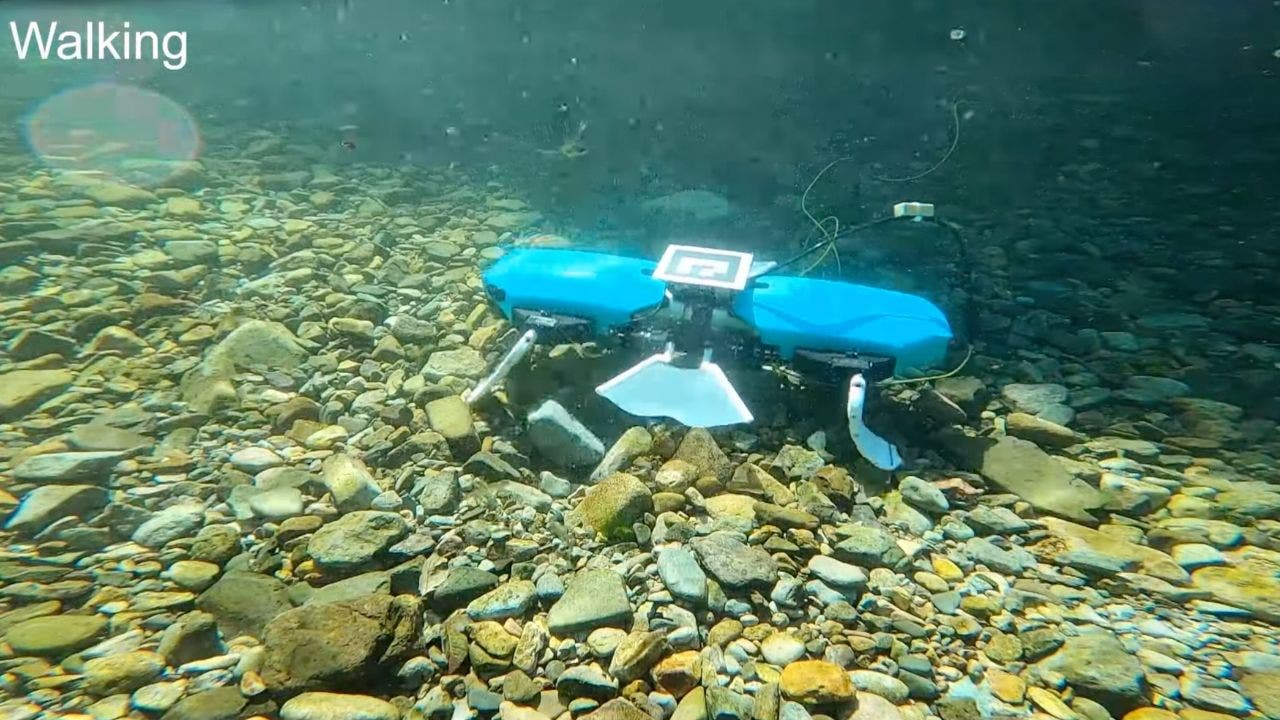
Dive into the world of underwater exploration, and you’ll find a new player making waves: HERO-BLUE. This isn’t your average remotely operated vehicle (ROV); it’s an innovative robot designed to tackle the challenges of the depths of the sea with a unique set of skills.
CLICK TO GET KURT’S FREE CYBERGUY NEWSLETTER WITH SECURITY ALERTS, QUICK VIDEO TIPS, TECH REVIEWS AND EASY HOW-TO’S TO MAKE YOU SMARTER
HERO-BLUE (POSTECH) (Kurt “CyberGuy” Knutsson)
HERO-BLUE by the numbers
HERO-BLUE is a proof-of-concept robot, measuring 31.5 inches by 23.6 inches by 11.8 inches and weighing 24.9 pounds. It’s remotely controlled, but with its stereoscopic vision, the future could see HERO-BLUE operating autonomously, leading the charge in underwater exploration and research.

HERO-BLUE (POSTECH) (Kurt “CyberGuy” Knutsson)
MORE: DIVE INTO THE SEA WITH THIS STATE-OF-THE-ART UNDERWATER DRONE
A new breed of ROV
HERO-BLUE stands for “Hazardous and Extreme Environment Robot for Biomimetic multiLocomotion-based Underwater Expedition.” Developed by Taesik Kim and his team at South Korea’s Pohang University of Science and Technology, this experimental device is inspired by the natural world. HERO-BLUE is equipped to swim, walk and crawl its way through the most challenging environments. The journal IEEE Transactions on Robotics has recently featured a publication detailing the research.
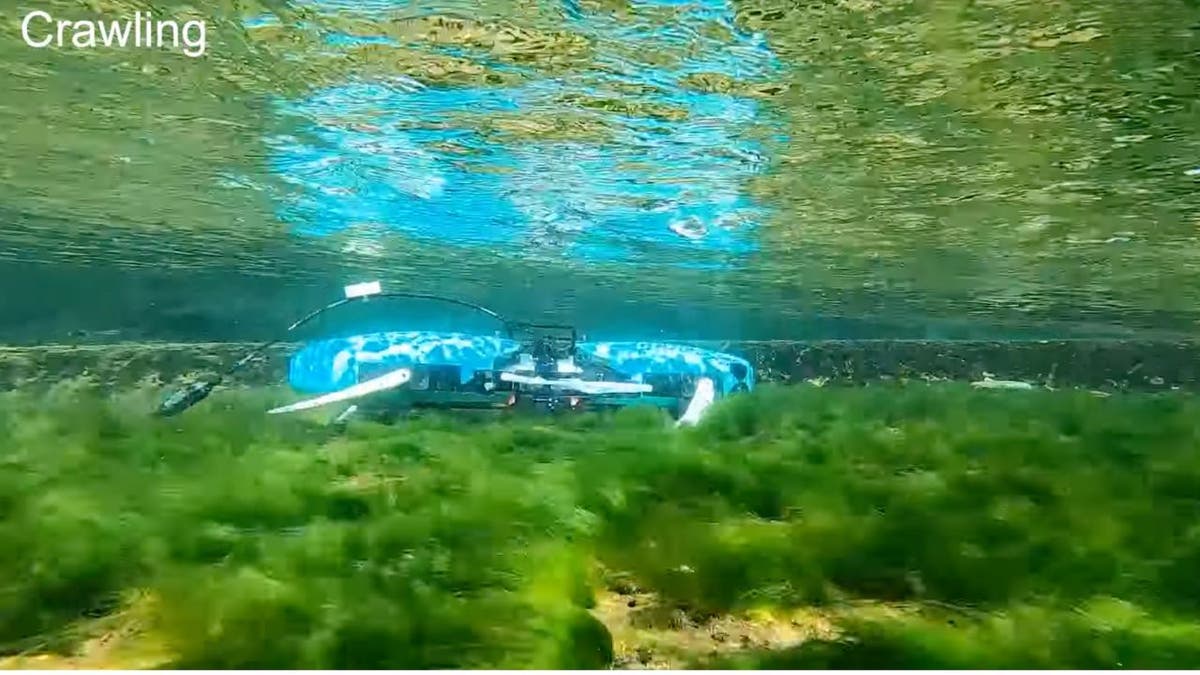
HERO-BLUE (POSTECH) (Kurt “CyberGuy” Knutsson)
MORE: CREEPY CHINESE DRONE SWIMS UNDERWATER AND FLIES THROUGH AIR
Swimming against the current
Traditional ROVs rely on electric thrusters to navigate the watery depths. However, these thrusters have limitations – they can get clogged with debris or struggle against strong currents. Enter HERO-BLUE, the robot that’s not just making a splash but is set to revolutionize underwater missions.
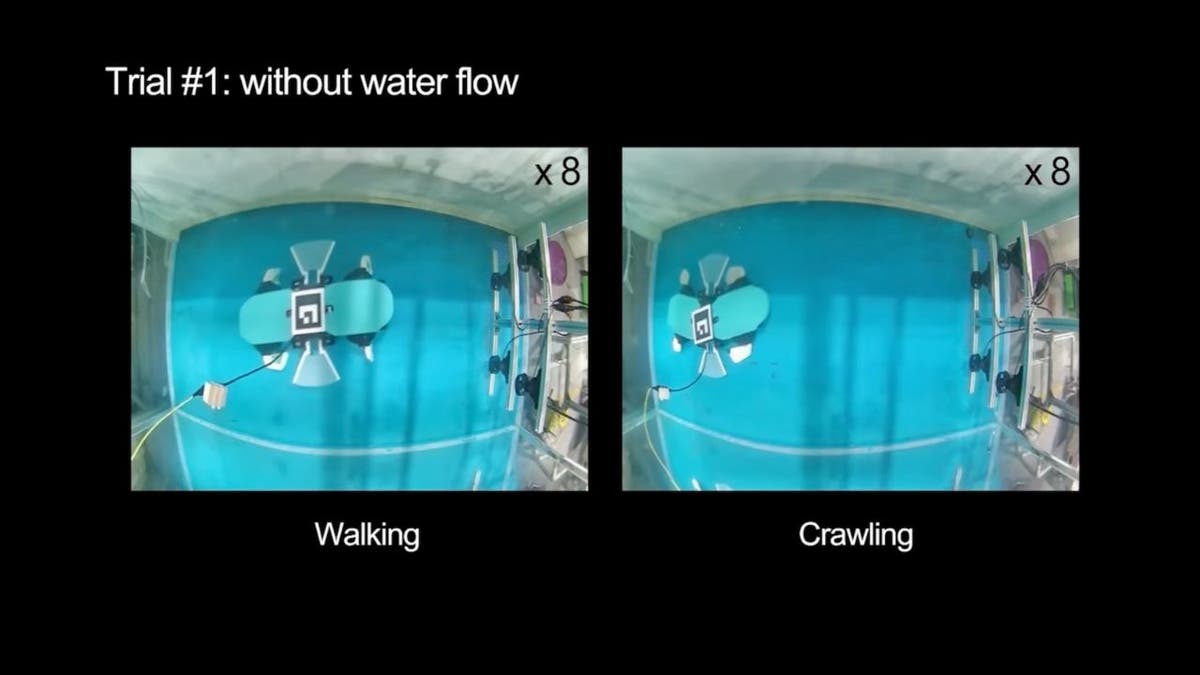
HERO-BLUE (POSTECH) (Kurt “CyberGuy” Knutsson)
MORE: CRAZY FUTURISTIC UNDERWATER JETPACK LETS YOU FLY IN WATER LIKE AQUATIC SUPERHERO
Fin-tastic design
What sets HERO-BLUE apart are its four multimodal fins and two lateral fins. These aren’t just any fins; they’re made of polymer panels connected by elastomer tendons, allowing them to be rigid or flexible as needed. This design enables HERO-BLUE to adapt its movement strategy on the fly – flapping through the water like a fish or walking along the seabed when currents prove too strong.
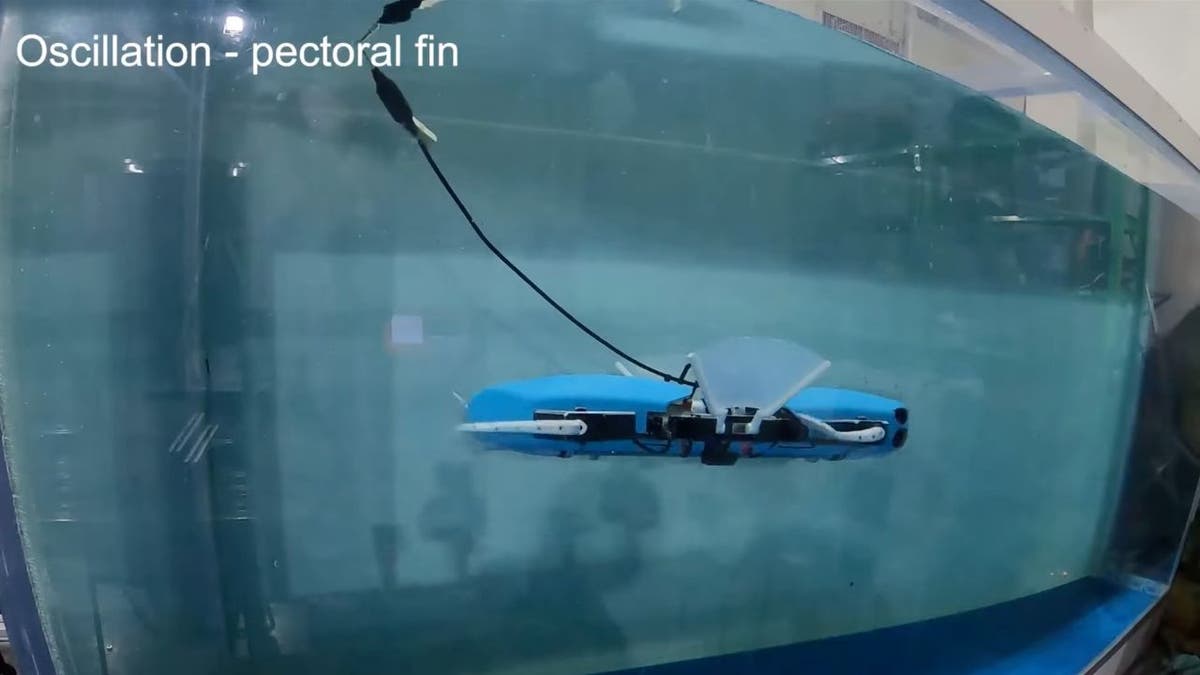
HERO-BLUE (POSTECH) (Kurt “CyberGuy” Knutsson)
MORE: UNFORGETTABLE MOTHER’S DAY GIFTS 2024
The backbone of innovation
In shallow waters where swimming isn’t feasible, HERO-BLUE’s salamander-inspired spine comes into play. This flexible backbone allows the robot to wriggle forward, ensuring progress even in the trickiest conditions.
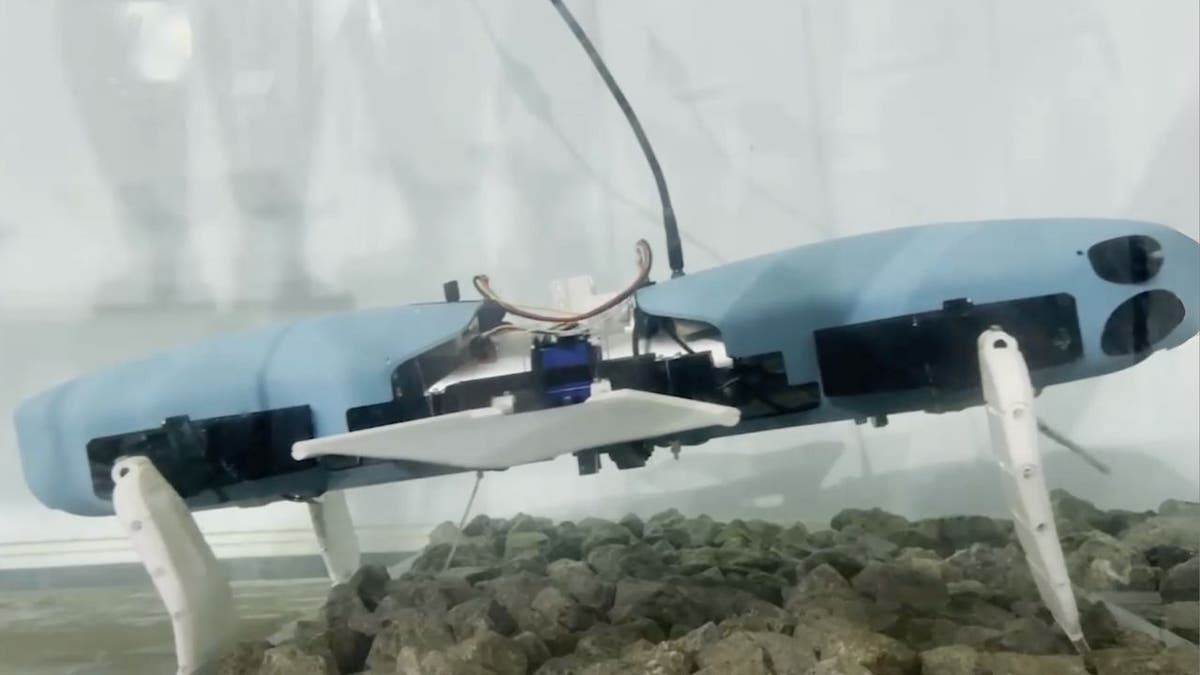
HERO-BLUE (POSTECH) (Kurt “CyberGuy” Knutsson)
Kurt’s key takeaways
HERO-BLUE represents a significant leap forward in ROV technology. Its biomimetic design and multimodal locomotion capabilities position it as a potential game-changer for industries relying on underwater exploration and maintenance. As we look to the depths of our oceans for answers, robots like HERO-BLUE will be at the forefront, navigating the uncharted waters of innovation.
What ethical considerations should be taken into account when deploying robots like HERO-BLUE for underwater exploration, especially in sensitive or protected marine areas? Let us know by writing us at Cyberguy.com/Contact.
For more of my tech tips and security alerts, subscribe to my free CyberGuy Report Newsletter by heading to Cyberguy.com/Newsletter.
Ask Kurt a question or let us know what stories you’d like us to cover.
Answers to the most asked CyberGuy questions:
Copyright 2024 CyberGuy.com. All rights reserved.
Technology
The new Tesla Cybertruck update makes it more off-roady
/cdn.vox-cdn.com/uploads/chorus_asset/file/25426212/GMVbcTFWgAAOeLo.jpeg)
The Tesla Cybertruck is finally getting an off-road mode via an over-the-air software update, allowing early owners of the monstrous electric truck to finally get granular 4×4-style features that were promised from the start.
The news comes via a post by Tesla’s Cybertruck account on X, which shared an image of the Off-Road Mode screen with different settings, options for locking differentials, the ability to turn off rear steering, and more. Off-Road Mode has two main settings: Overland Mode for consistent handling and better traction on rock, gravel, snow, and sand, plus a Baja Mode that improves balance and “handles more freely.”
Wes Morrill, whose X profile lists them as the lead Cybertruck engineer, also posted some more details about the update. Morrill notes the app allows for a quick look at the vitals of the car, on-board camera feeds you can swipe through, as well as one-touch controls for the off-road features.
Cybertruck owners can even get quick access to Wade Mode that raises the truck to handle deep water situations — which is not covered under warranty despite CEO Elon Musk’s saying for years that the Model S and the Cybertruck can act like a boat for short periods.
Tesla has also launched CyberTent mode, which levels the truck on horizon, runs the AC, keeps the tonneau cover open, and keeps the outlets powered. The feature is designed to work in conjunction with Tesla’s ugly but functional Basecamp tent add-on. Tesla was selling the $3,000 kit to Cybertruck owners for more than a month — before the software to fully utilize it was available.
-

 Education1 week ago
Education1 week agoVideo: Dozens of Yale Students Arrested as Campus Protests Spread
-

 World1 week ago
World1 week agoShipping firms plead for UN help amid escalating Middle East conflict
-

 World1 week ago
World1 week agoEU sanctions extremist Israeli settlers over violence in the West Bank
-

 Politics1 week ago
Politics1 week ago'Nothing more backwards' than US funding Ukraine border security but not our own, conservatives say
-

 Politics1 week ago
Politics1 week agoDemocrats hold major 2024 advantage as House Republicans face further chaos, division
-

 Politics1 week ago
Politics1 week agoFetterman hammers 'a–hole' anti-Israel protesters, slams own party for response to Iranian attack: 'Crazy'
-

 World1 week ago
World1 week agoPeriod poverty still a problem within the EU despite tax breaks
-

 Politics1 week ago
Politics1 week agoA battle over 100 words: Judge tentatively siding with California AG over students' gender identification












